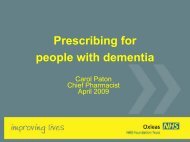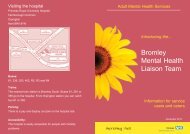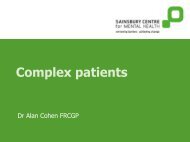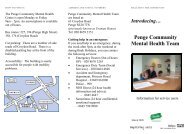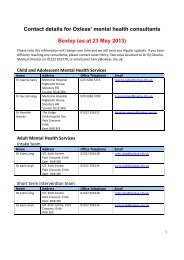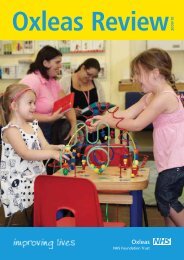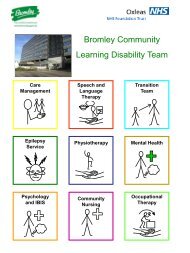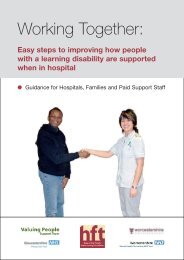Incident Management Policy and Procedure 652.0 KB - Oxleas NHS ...
Incident Management Policy and Procedure 652.0 KB - Oxleas NHS ...
Incident Management Policy and Procedure 652.0 KB - Oxleas NHS ...
Create successful ePaper yourself
Turn your PDF publications into a flip-book with our unique Google optimized e-Paper software.
• ensure that conclusions are evidenced <strong>and</strong> reasoned, <strong>and</strong> that recommendations canrealistically be implemented;• include a description of how patients/victims <strong>and</strong> families have been engaged in theprocess;• include a description of the support provided to patients/victims/families <strong>and</strong> staff followingthe incident.For further information on the RCA process, tools <strong>and</strong> templates please refer to the guidance on theNPSA website: www.npsa.nhs.uk4 SUPPORT FOR VICTIMS, PERPETRATORS, FAMILIES, CARERS AND STAFFThe NPSA has issued guidance to the <strong>NHS</strong> – Being open – communicating patient safety incidentswith patients <strong>and</strong> their carers. Although this guidance is primarily aimed at communication withpatients (<strong>and</strong> their families or carers) who have been harmed as a result of an error in their healthcare,the principles of honesty <strong>and</strong> openness also apply when planning discussions with victims,perpetrators, families <strong>and</strong> carers.The basic principles underlying this communication are the:• principle of acknowledgement;• principle of truthfulness, timeliness <strong>and</strong> clarity of communication;• principle of apology.When an incident leading to serious harm or death occurs, the needs of those affected are of primaryconcern to the trust, <strong>and</strong> those undertaking any investigation. Any contact should be undertaken in arespectful, dignified <strong>and</strong> compassionate manner, <strong>and</strong> in a spirit of openness. The service director willtake the lead, <strong>and</strong> agree with the family who the main family contact will be.Victims <strong>and</strong> families want to know:• What happened?• Why it happened?• How it happened?• What can be done to stop it from happening again to anyone else?The victim <strong>and</strong> family should be offered a meeting. The meeting should not take place at the site of theincident <strong>and</strong> staff involved in the incident should not be required to attend. The meeting should explainwhat support processes have been put in place <strong>and</strong> how they can be accessed.If victims <strong>and</strong> their families do not wish to participate in a meeting with the trust then informationshould be put in writing. If contact is initially rejected further attempts should be made to establishcontact <strong>and</strong> share information. If contact continues to be rejected in the case of homicide, the SHAshould be asked to take over responsibility for victim <strong>and</strong> family liaison.21






